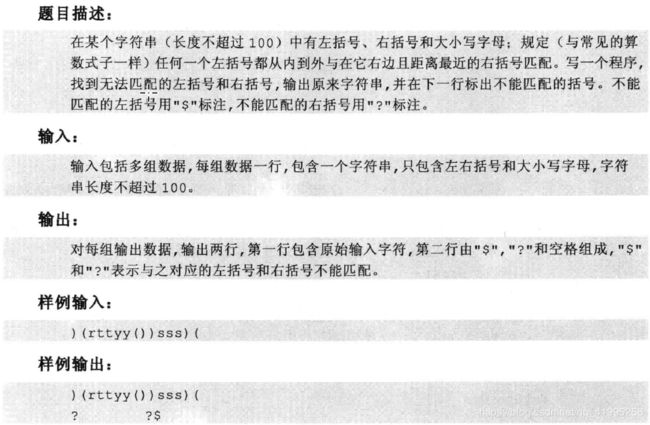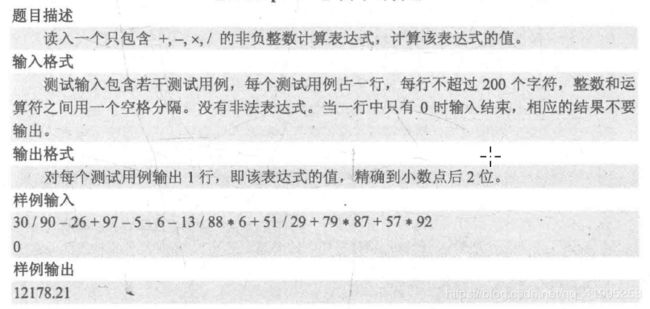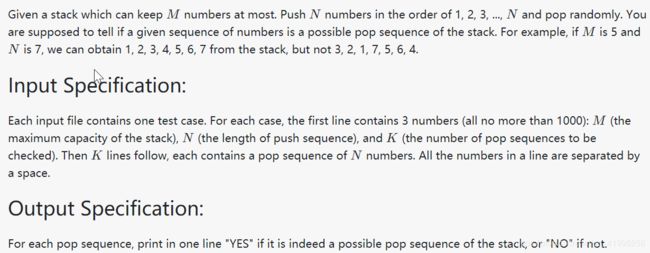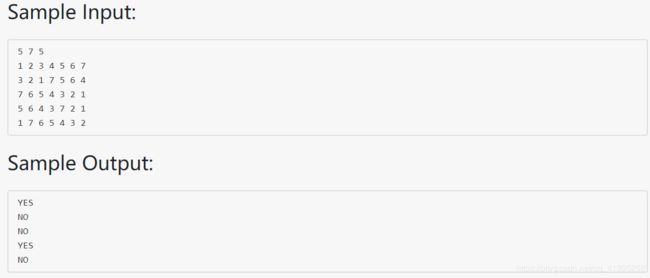数据结构专题(持续更新)
一、堆栈
基本操作:
#include 注:在使用pop() 和 top() 函数之前,必须先使用 empty() 函数判断栈是否为空。
思路分析:
建立堆栈,存放左括号的下标值。而对于右括号,只需要判断堆栈中是否还存在元素(左括号)。若存在则匹配成功,否则意味着匹配失败。
代码:
#include 思路分析:
题目给出的是中缀表达式,但对于计算机而言,表达式求值运用的是后缀表达式,因而求值应包含下面两个步骤:
1)中缀表达式转后缀表达式
2)计算后缀表达式
步骤一:中缀表达式转后缀表达式
① 建立一个操作符栈;设立一个后缀表达式队列。
② 从左向右扫描中缀表达式,遇到操作数,就把该操作数入后缀表达式队列。
注:操作数可能不止一位,因而需要单独处理。
while(i<str.length() && str[i]>='0' && str[i]<='9') // 操作数的读取
{
temp.num = temp.num * 10 + (str[i++] - '0');
}
③ 遇到操作符op,将其与操作符栈顶元素的优先级比较:
- op优先级 > 栈顶符号优先级: 将op入栈。
- op优先级 <= 栈顶符号优先级: 将操作符栈顶元素不断弹出,直至op优先级高于栈顶符号优先级,将其入栈。
注:因为栈顶符号会被先使用,所以栈顶存放优先级高的符号。
④ 重复上述操作,直至中缀表达式扫描完毕。之后若操作符栈中仍有元素,则将它们依次弹出至后缀表达式。
步骤二:计算后缀表达式
从左向右扫描后缀表达式,读到操作数便将其入栈,读到操作符就连续弹出两个操作数(注:后弹出的是第一操作数,先弹出的是第二操作数),计算和生成的新操作数入栈。反复操作,最终栈中只剩下一个数,就是最终的答案。
代码:
// 简易计算器
#include 题目大意:
有一个容量限制为M的栈,先分别把1,2,3,…,n依次入栈,并给出一些列出栈的顺序,问这些出栈顺序是否可能。
思路分析:
本题是一道堆栈的模拟题,可以模拟入栈出栈的过程。
若堆栈未满,将数字顺序入栈,并将栈顶元素与题目给出的出栈数组相比较,若相等,则将该数字出栈。
最后若栈为空,表示序列成立,否则不成立。
注意:每次循环的最开始,一定要将栈清空!!!养成随时清空堆栈的习惯。
代码(AC)
#include 


